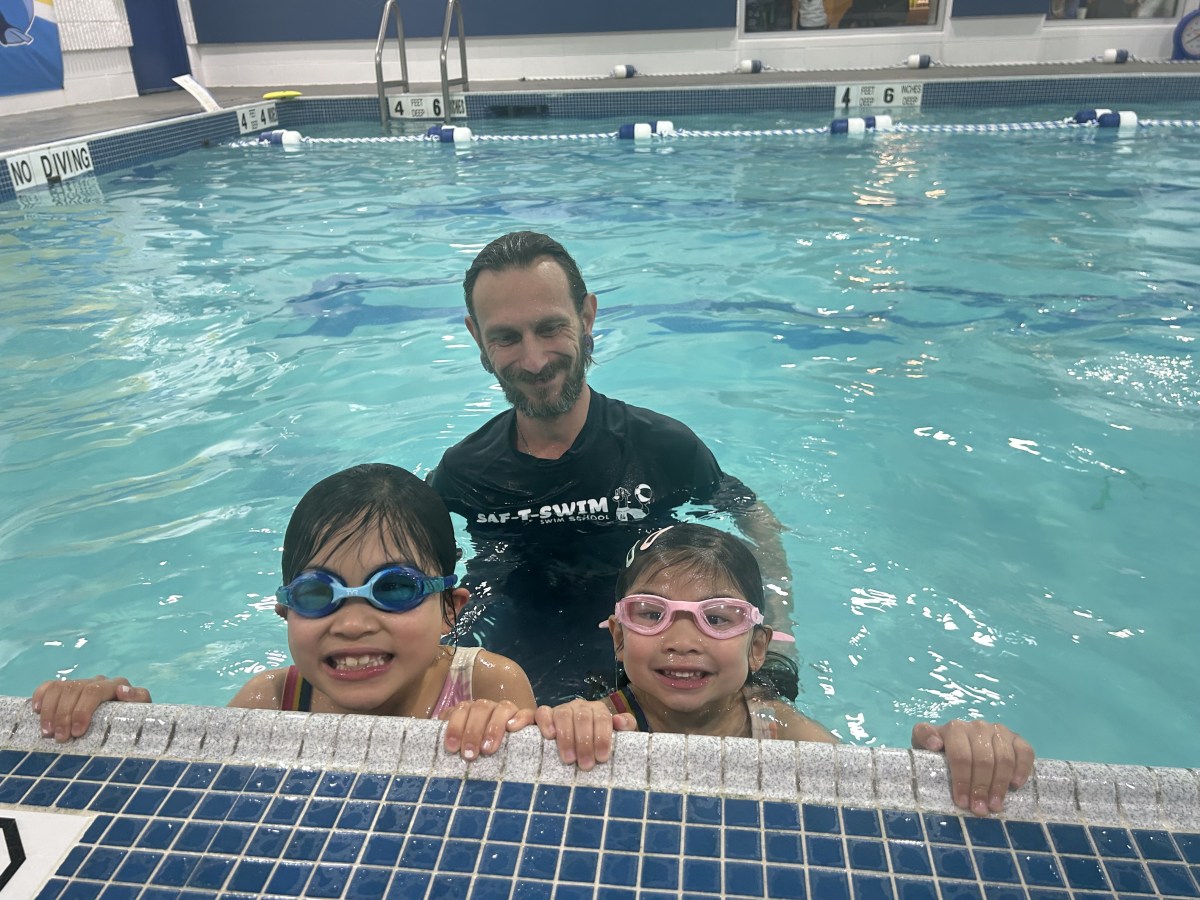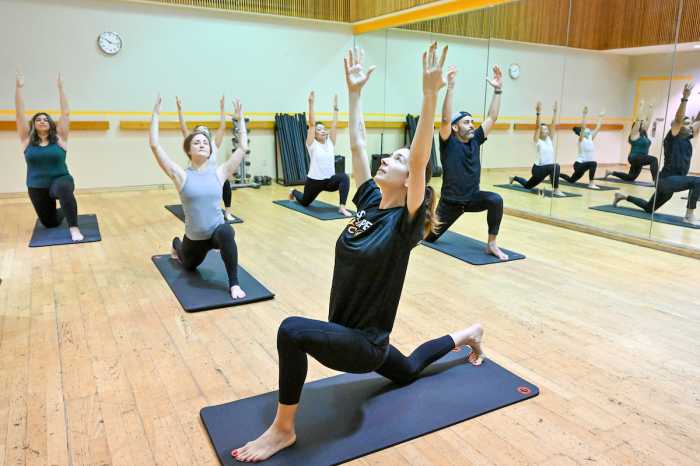As Long Island families gear up for another summer of beaches, backyard pools and boating, water safety experts are urging parents and caregivers to take critical steps to prevent drownings—an issue that continues to impact local communities at alarming rates.
Drowning remains one of the leading causes of accidental death among young children in the United States and Long Island is not immune.
In Suffolk County alone, officials reported 10 fatal drownings as of July 22, 2024—surpassing totals from both 2022 and 2023. In nearby Nassau County, authorities documented nine drowning or near-drowning incidents last year, most of which occurred in residential pools and involved children under the age of five.

“Water safety isn’t just a seasonal issue—it’s a year-round responsibility, especially on Long Island where water is all around us,” said Sheona Golden, director of operations for Saf-T-Swim, a local swim school with 13 locations across Nassau and Suffolk counties. “Whether it’s an ocean, a canal, a lake or a backyard pool, water is never far from reach. That’s why education, preparation and constant supervision are so important.”
A Preventable Tragedy
According to the Centers for Disease Control and Prevention, children ages 1 to 4 face the highest risk of drowning, with most incidents occurring in home swimming pools. From 1999 to 2017, 35 % of drowning victims on Long Island were within this vulnerable age group. Experts cite a combination of factors that contribute to these tragic outcomes—lack of swim instruction, inadequate pool barriers, momentary lapses in supervision and false confidence in water competency.
“We see too many cases where families didn’t realize just how quickly drowning can happen,” Golden said. “It’s usually silent and fast—there’s no splashing, no yelling. That’s why one of our biggest messages to parents is to stay within arm’s reach of your child at all times when they’re near water.”
Building Confidence Through Swim Lessons
One of the most effective ways to prevent drowning is early swim instruction. Saf-T-Swim begins teaching children as young as four months old, helping them develop familiarity and confidence in the water. The school also offers programs for adults and individuals with disabilities through its Adaptive Aquatics curriculum.
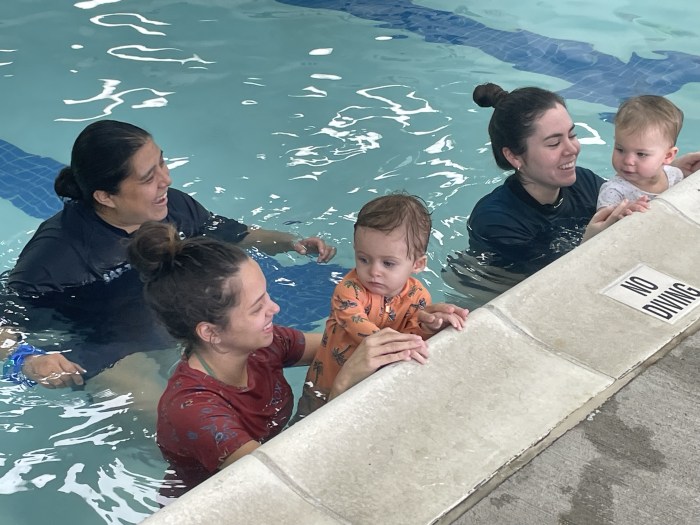
“For some families, swimming was historically seen as a luxury, not a necessity,” Golden said. “But we have to shift that mindset. Swim lessons are a life skill. It’s not about becoming an Olympic swimmer—it’s about learning how to float, how to breathe and how to get to safety if something goes wrong.”
Golden noted that adults who never learned to swim often pass that fear or lack of skill down to their children.
“If a parent doesn’t know how to swim, there’s about an 80 % chance their child won’t learn either,” she said. “That’s why we offer lessons across all ages and skill levels. Everyone deserves the chance to feel safe in the water.”
Tips for Safer Summers
In addition to swim lessons, Golden and other water safety advocates recommend a multi-layered approach to drowning prevention. This includes physical safeguards, education and emergency preparedness.
Here are 10 essential water safety tips for parents and caregivers:
- Start With Swim Lessons: Enroll children in swim programs early to build confidence and competence in the water.
- Be Their Lifeguard: Never assume someone else is watching. Stay within sight and arm’s reach of young swimmers at all times.
- Establish Pool Rules: Teach children basic rules—no running, no diving in shallow water and always ask permission before swimming.
- Use Coast Guard-Approved Life Jackets: Ditch inflatable arm floaties in favor of proper safety gear when boating or near open water.
- Learn the Real Signs of Drowning: It’s often quiet. Watch for signs like head tilting back, gasping or a look of distress.
- Follow Touch Supervision: For toddlers and young children, caregivers should always be close enough to touch.
- Take Breaks: Fatigue, dehydration and sun exposure can increase risks. Build in regular rest and snack time.
- Be Alert Around Open Water: Teach children about currents, wave safety and always swimming where lifeguards are present.
- Practice ‘What If’ Drills: Rehearse how to float on your back, reach the wall and call for help. Parents should also learn CPR.
- Keep It Fun: Celebrate small wins in the water. A positive experience encourages safer, more confident swimmers.
“Water safety doesn’t have to be scary,” Golden said. “It should be empowering. When families feel confident and kids are having fun while learning, the lessons stick. That’s how we create a safer community.”
Pool Rules for Everyone
Golden also emphasizes that water safety rules aren’t just for kids—they apply to everyone in and around the pool. “Roughhousing, running on slippery pool decks or diving in shallow water can all lead to injuries or worse,” she said. “We teach every student to respect the water and the people around them.”
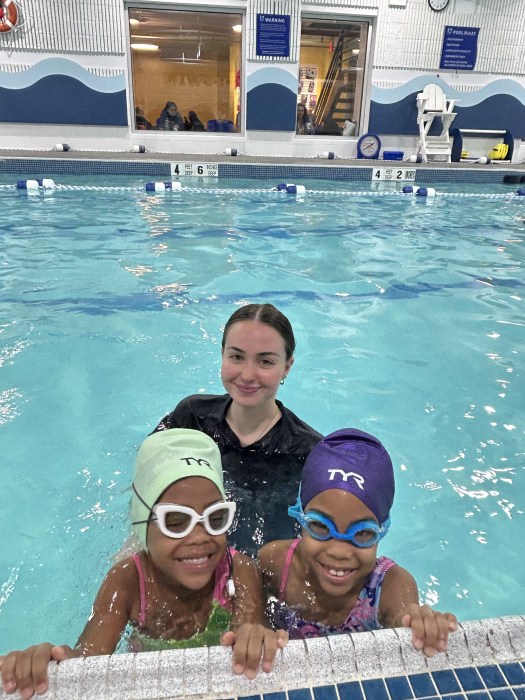
Some of the key poolside guidelines she suggests include:
- Always identify where the lifeguard is stationed.
- Never swim alone.
- Look before jumping into the water.
- Helping in emergencies by “reaching or throwing, not going.”
- Avoiding food or gum while swimming to prevent choking.
Protecting Vulnerable Populations
Saf-T-Swim’s tailored approach also extends to families with special needs. Children on the autism spectrum, for example, are at significantly higher risk of drowning—up to 160 times more likely, according to some studies—due to a tendency to wander or “elope,” toward bodies of water.
“That’s why we offer one-on-one lessons and sensory-friendly environments,” Golden explained. “We want every child, regardless of ability, to learn the skills they need to be safe.”
Data Underscores Urgency
The numbers on Long Island paint a sobering picture. In 2023, Suffolk County reported 15 drownings, with several involving children under the age of seven. In Bay Shore, a seven-year-old boy drowned in a residential pool and in North Haven, a two-year-old tragically lost their life.
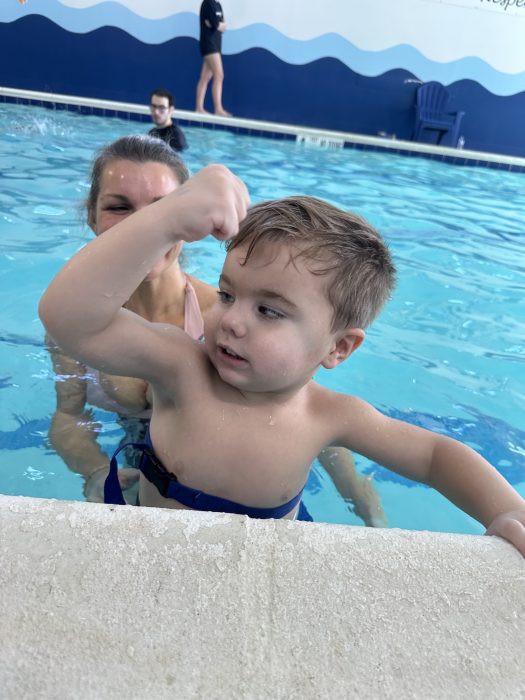
“These stories aren’t just statistics—they’re heartbreaking and most of them were preventable,” Golden said. “That’s why we’re committed to educating not just the kids, but the entire family. When parents understand the risks and know how to respond, we’re all safer.”
A Community Effort
Golden believes water safety isn’t just an individual responsibility—it’s a collective one. She encourages neighbors, schools and community centers to spread awareness and offer resources year-round.
“If you see a child wandering near a pool, say something. If you host a pool party, assign a designated water watcher who isn’t drinking or distracted,” she said. “Every small action can have a big impact.”
As summer heats up, local officials, instructors and parents alike hope that with the right education and vigilance, Long Island can enjoy a fun—and safe—season in the water.
For more information about water safety, visit www.saf-t-swim.com.




